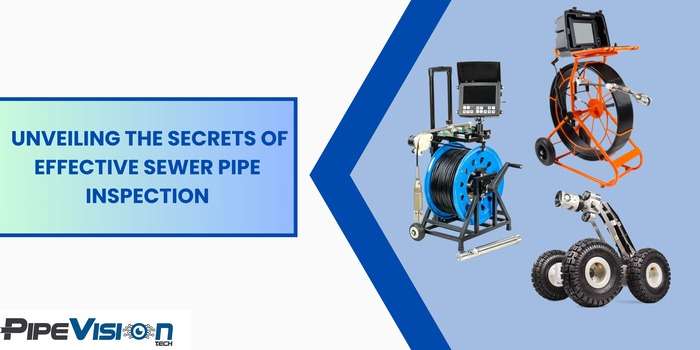Blogs, Sewer pipe camera
Unveiling the Secrets of Effective Sewer Pipe Inspection
Revitalizing your plumbing system begins with mastering effective sewer pipe inspection. Whether you’re a seasoned professional or a DIY enthusiast, this guide is your key to unlocking the secrets of budget-friendly, efficient sewer pipe inspections. Join us as we delve into techniques, tools, and common challenges, empowering you to breathe new life into your plumbing infrastructure.
The Essence of Effective Sewer Pipe Inspection
Why it Matters
Effective sewer pipe inspection is the foundation of a healthy plumbing system. It allows you to identify issues early, preventing costly repairs and ensuring the longevity of your pipes.
Budget-Friendly Approach
You don’t need a hefty budget to conduct thorough sewer pipe inspections. With the right techniques and tools, you can achieve effective results without breaking the bank.
Techniques for Effective Sewer Pipe Inspection
Technique 1: Visual Inspection
Begin with a visual inspection of accessible areas. Look for signs of corrosion, cracks, or blockages, and note any unusual odors or discoloration.
Technique 2: Smoke Testing
Use smoke testing to identify leaks or breaks in the sewer line. Introduce smoke into the system and observe where it escapes, revealing potential problem areas.
Technique 3: Hydrostatic Testing
Conduct hydrostatic testing by filling the sewer line with water to assess its structural integrity. This method is particularly useful for detecting leaks.
Essential Tools for DIY Inspection
Tool 1: Plumbing Snake
A versatile tool for dislodging minor clogs and debris within the pipes.
Tool 2: CCTV Sewer Camera
Invest in a cost-effective CCTV sewer camera for a detailed visual inspection of the interior of your sewer pipes.
Tool 3: Smoke Testing Kit
Affordable smoke testing kits are available for DIY enthusiasts, allowing you to identify leaks with ease.
Common Challenges and Solutions
Challenge 1: Limited Access
Solution: Utilize flexible tools like plumbing snakes and miniaturized cameras to navigate through tight spaces.
Challenge 2: Identifying Hidden Leaks
Solution: Employ smoke testing or hydrostatic testing to uncover hidden leaks that may not be visible during a visual inspection.
Challenge 3: Interpreting Inspection Results
Solution: Take advantage of user-friendly inspection tools with clear visuals and documentation features. Seek professional guidance for complex issues.
Conclusion
Revitalizing your plumbing system doesn’t have to drain your budget. With the right techniques, tools, and a keen understanding of common challenges, effective sewer pipe inspection becomes an accessible and empowering task.
PipeVisionTech: Your Partner in Effective Inspections
For cutting-edge tools that elevate your sewer pipe inspections, trust PipeVisionTech. Committed to innovation and affordability, PipeVisionTech provides solutions that redefine the effectiveness of your plumbing diagnostics.
Frequently Asked Questions
Q1: How often should I conduct sewer pipe inspections?
Regular inspections are recommended annually, with more frequent checks if you notice any warning signs like slow drainage or unusual odors.
Q2: Can I perform sewer pipe inspections without professional training?
While basic inspections are possible for DIY enthusiasts, professional training enhances your ability to interpret results accurately. Consider consulting a professional for complex issues.
Q3: Are there budget-friendly alternatives to CCTV sewer cameras?
Yes, there are affordable CCTV sewer camera options suitable for DIY inspections. Research and choose a model that fits your budget and requirements.
Q4: What are the signs that I need a sewer pipe inspection?
Signs include slow drainage, unusual odors, recurring clogs, or visible signs of damage to the property’s foundation.
Q5: Can effective sewer pipe inspection prevent major plumbing issues?
Absolutely. Early detection through effective inspections allows you to address minor issues before they escalate, preventing major plumbing problems and costly repairs.


